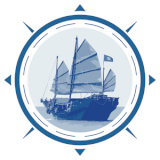Harta Karun

The Harta Karun document collection is a growing body of transcribed and translated manuscripts vital for our understanding of the early modern history of the Indonesian Archipelago and the Asian-European encounter. Historians and archivists are working together at ANRI to make available a selection of documents from the digitalized series of this website. The selected and translated documents fall into four main categories and twenty-four subcategories which you can find in the table below. You can download these documents which are alllisted under the tab 'All documents'.

Harta Karun means ‘Hidden Treasures’. This collection is based on a wealth of so far largely unused primary sources in the ANRI VOC archives. Archivists and global historians specialized in the use of VOC archives are selecting, preparing and publishing these documents with the help of skilled translators.
One of the main principles of selection is to identify documents which can shed light on the local and regional history of pre-colonial and early modern Nusantara in the 200 years between 1600 and1800. Nusantara is the ancient name for the Indonesian Archipelago dating from the time of the great kingdoms of Srivijaya and Majapahit. We have chosen the name of the Nusantara because many features of the old world of the Nusantara still existed during the seventeenth and eighteenth centuries. Thousands of documents in the VOC archives were actually written by the rulers and people of the Nusantara. Although most of the original documents have been lost, the translations in old Dutch have survived.
The selection also includes documents about other maritime states and settlements across the whole of the Indian Ocean and South China Sea. Given the diverse nature of these archives, plenty of information on various aspects of the Asian-European encounter is awaiting its historians. Those intent on writing global histories will find much of value in these archives.
The selection and translation of documents is a continuing process, involving students, young researchers and university teachers. Documents selected for this digital collection can help us unravel the history of Indonesia and the Asian-European encounter in a wider global context. In this process, several methodological challenges must be overcome. Firstly, the relevant information must be sifted from documents originating from officials of a European merchant company, private tradesmen or burghers residing in Dutch colonial territories. The task of professional historians is to deal with the often one-sided and Eurocentric perspective of such documents. Some papers swarm with biased opinions and negative, sometimes disturbing, ideas about Asian peoples. Awareness of this limitation makes it possible to collect historical information more objectively.
Secondly, and most importantly, there are literally thousands of letters penned by Asians in the ANRI. Historians and linguists will have to develop methodologies to analyse these documents which were produced by sultans, local rulers and kings as well as more humble correspondents such as tradesmen and burgers. To arrive at a correct analysis is a challenge. Dutch clerks in Batavia Castle translated all these letters, originally written in Malay, Javanese, Sundanese, Timorese, Madurese, Chinese and other Asian languages immediately after receipt of the original. These often beautifully decorated missives embellished with gold were conveyed to the VOC headquarters with great pomp and circumstance and were presented to the Governor-General on a silver salver covered by a piece of yellow silk to a salute of cannon. The letter was first read aloud in the original Asian language and then translated into Dutch. Most of these original letters have succumbed to the ravages of time and the fate of the originals is unknown. The Daily Journals of Batavia Castle contain a rich collection of translated documents from Asian letter writers. The Appendices to the Resolution Books do still contain some original Asian letters, but most of the splendid gold missives have disappeared.
One of the ways of approaching these documents in antiquated Dutch is to put the archive in the context of a wider Maritime Southeast Asian regional history. Much of the older historiography has already been rewritten with an eye to the national and global context, but historiography can still be improved by uncovering new facts and the use of sophisticated national, regional or local perspectives to enhance our historical analysis.
The first aim of the Harta Karun collection is to make available new historical facts which can help reconstruct the maritime, political, socio-economic and religious history of the Malay peninsula and Indonesian archipelago. This in turn can help put the Nusantara in a wider Asian context, in particular its relationship to China and India.
The Harta Karun collection also contains many documents on Asian history.Dealing with events and places covering half the globe from Japan to Arabia these documents fulfill the second aim of the collection. This second section is arranged geographically. It should be remembered that the most important documents on the wider Asian region are in The Hague. The National Archives in The Hague keep the copybooks of the so-called ‘Ingekomen Indiase brievenboecken’ (the incoming Asian letterbooks) which were forwarded from Batavia Castle to the Chambers of the VOC in the Dutch Republic. Apart from some scattered fragments, many volumes from the original series of these letter-books copied at the General Secretariat in Batavia Castle have not survived the nineteenth and twentieth centuries. The lack of interest of former colonial governments in the VOC archives is largely responsible for this.
The third aim of the ‘Harta Karun’ documents is to provide information regarding Asian-European interactions, maritime activities, diplomatic and armed encounters, and economic co-operation, all subjects related to early modern European expansion in an era of globalised trade.
The fourth aim is to rediscover the history of one of the largest maritime port cities in Asia, Batavia. Ruled with a firm hand by various local city institutions, Batavia was always a city with a population which was at least 90 per cent Asian. The challenge is to reconstruct the social and economic lives of the thousands of individuals made up of dozens of ethnic groups and nationalities who flocked together in this complex urban environment to make a better life for themselves. This website will contribute to the rediscovery of Batavia as a predominantly Asian city.








